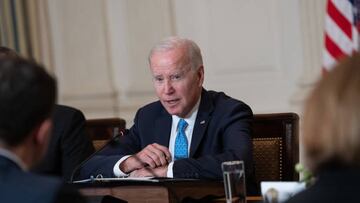What is Biden’s plan for ending hunger in the US and what will happen to the SNAP program?
The President has set an ambitious target, aiming to end food poverty entirely by 2030 with a raft of new initiatives.


Ahead of the November mid-terms President Joe Biden has unveiled a broad new federal program which aims to tackle food poverty in the United States. He announced the new measures at a White House Conference on Hunger, Nutrition and Health, the first of its kind in more than 50 years.
Biden will commit more than $8 billion in private and public funding with the aim of reducing diet-related diseases and ending hunger entirely by 2030.
“I really know we can do this, end hunger in this country, by the year 2030 and lower the toll that diet-related diseases take on far too many Americans,” Biden said. “This goal is within our reach. Just look at how far we’ve come on child poverty.”
The initiative is actually comprised of a number of new measures designed to offer financial support and to better inform Americans about what they are eating. Officials will work with businesses, local administrators, academics and charities to help make consumers better able to make healthy dietary choices.
The Biden-Harris Administration envisions an America where no one wonders whether they will have enough money to put food on the table.
— The White House (@WhiteHouse) September 28, 2022
Learn more about the White House National Strategy on Hunger, Nutrition, and Health: https://t.co/7khyJLCyVn
Of the $8 billion being put forward, more than half will be spent to improve access to nutritious food, while also promoting healthy choices and encouraging a more active lifestyle. Another $2.5 billion will be used to fund new startups which attempt to find solutions to food insecurity and related issues.
“Food and nutrition insecurity still remains unacceptably high,” said Agriculture Secretary Tom Vilsack, speaking at the White House. “We also face a rising prevalence of diet-related diseases like Type 2 diabetes, obesity, hypertension, which disproportionately impact underserved communities.”
What does this mean for SNAP benefits?
The additional funding is not only reserved for new initiatives, but will also be used to bolster existing programs. The Supplemental Nutrition Assistance Program (SNAP) is the most widely-used form of food support in the US, with more than 41 million low-income people benefiting from the payments every month.
Related stories
Biden’s plan will provide a significant boost to the SNAP benefits, with the average recipient receiving an extra $26 per month as a result. For a low-income family of four, then additional $100 will make a huge difference to the monthly food budget.
As part of the plan the Agriculture Department hopes to expand the eligibility requirementsto allow more people to access the support in future. The White House says it hopes to provide free school meals for an additional 9 million children by 2032.

